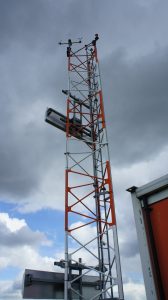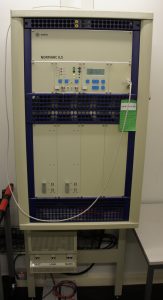
Period: May – Sep 2015
Client: Chester Hawarden Airport
Subject: Chester Hawarden Airport – Definition, development and management of Instrument Landing System and Distance Measuring Equipment replacement. This piece of work is one of many collaborations between Airbus and Cyrrus Limited.

Challenge
In early 2012 Airbus Operations Limited, as part of their on-going development programme at Hawarden Airport, engaged Cyrrus to define, develop and manage the replacement of the Instrument Landing System (ILS) and Distance Measuring Equipment (DME) on Runway 22.
In order to identify the optimum system configuration while ensuring regulatory compliance, Cyrrus completed an initial System Design that explored the ILS performance in the context of the existing and future environment at Hawarden Airport. Cyrrus in-house experts have vast experience of designing ILS solutions, often in situations deemed improbable to ILS operations. The initial design at Hawarden ensured through the use of modelling and simulation that, with a high degree of confidence, a specification could be produced that would provide an effective and efficient solution to the problem.
Solution
Cyrrus applied their tried and tested process that follows best System Engineering practice to define and develop the requirements into a technical documentation package with which to source potential suppliers. The first step was to evaluate the regulatory requirements of International Civil Aviation Organisation and the Civil Aviation Authority (CAA) to produce a set of specific requirements for the ILS/DME at Hawarden. Additionally, Cyrrus created a User Requirements Specification that detailed not only the Operational Requirement provided by Airbus but also included the spares, support, warranty, training and documentation requirements needed by the airports Air Navigation Service Provider.
Having identified all of the applicable regulations and gathered all user requirements, Cyrrus generated a Systems Requirements and Procurement Specification. This document contained the detailed technical requirements of any system offered to replace the existing ILS/DME. Additional to the technical requirements, a Statement of Work was also produced that stated the process to be followed by the potential suppliers.
Cyrrus assisted with the preparation of the commercial documentation and also managed the end-end tender process, including a detailed analysis of all aspects of each submission. This information was presented to Airbus who chose Systems Interface Limited to conduct the replacement task. Cyrrus participated in the contract negotiations which also clarified the proposed schedule of work.
Result
Cyrrus attended the Factory Acceptance Test on behalf of the Client ensuring that the equipment was suitable and met the project requirements. Cyrrus was also on-site during the Site Acceptance Tests and commissioning flight trials. Their expert knowledge was key to identifying potential problems with the commissioning of the system.
During the preparation of the technical requirements documentation, Cyrrus also created a number of Verification Cross Reference Indexes that tracked the apportionment of the high-level requirements all the way through the documentation. These indexes are used to define the testing criteria. By analysing each requirement and providing evidence through direct inspection, demonstration or documentation, the project can assure every requirement set is satisfied.
Conclusion
This process led to CAA approval and operational introduction of the ILS/DME with extremely complimentary comments from the CAA Inspector.





